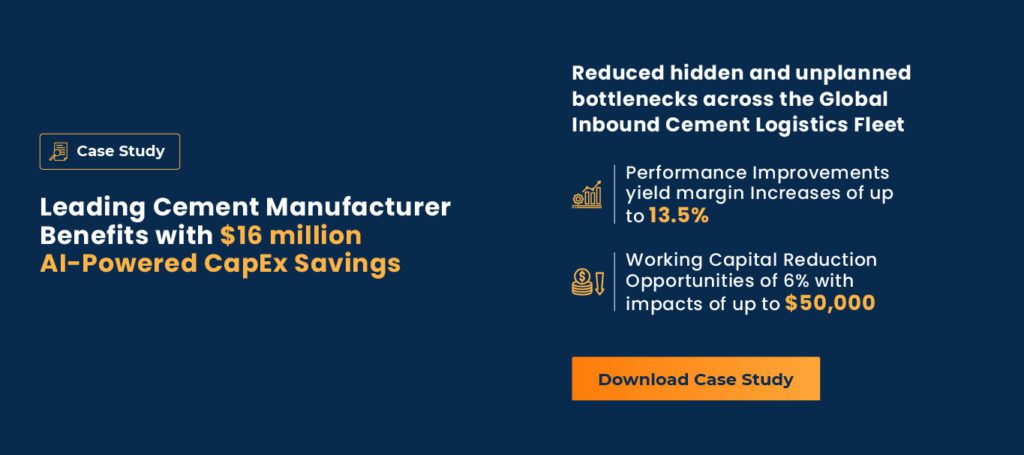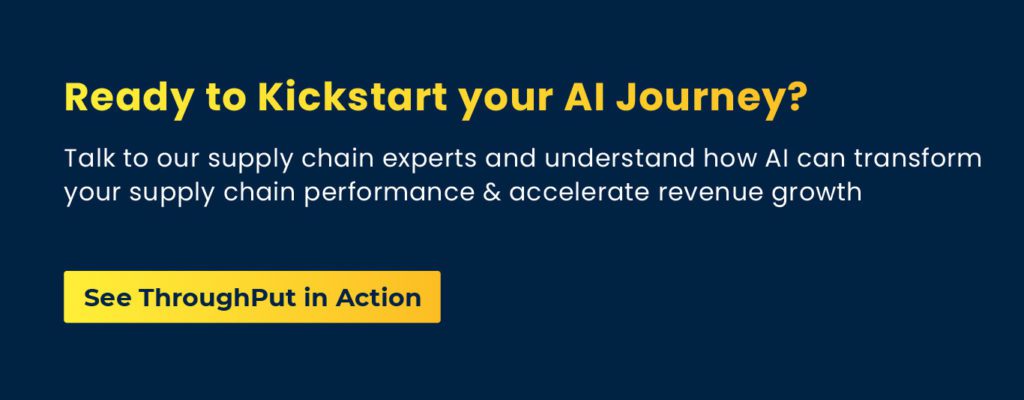5 Ways You Can Transform Supply Chain Planning with AI

Today, as businesses scramble to cope with rapidly changing demand patterns and market conditions, supply chain planning and networks have transformed into a battleground for customer loyalty.
The Supply Chain Management Software market worldwide is projected to grow by 4.05% (2025-2029) resulting in a market volume of US$24.58bn in 2029. (Source: Statista)
But what if automation were just the table stakes in this industry? What if, you could take it a step further, and benefit from supply chain efficiency – the kind of which you couldn’t imagine before?
Because truth be told, the kind of chaos that supply chains the world over have been reeling from is not something that can be solved via automation alone. There is now an urgent need to also streamline and optimize business operations, end to end across the supply chain.
This is where artificial intelligence (AI) is proving to be such a game changer.
Unlike standard software, which primarily aims to automate tasks, AI has the ability to rise above ground level and provide a much-needed larger-picture perspective on business operations, without losing sight of the little details – such as inventory management – that can often lead to cumulative losses.
Gain a Competitive Edge with AI in Supply Chain Planning
Coupled with machine learning (ML), AI has the potential to turn the tide back in favor of businesses by imbibing a level of transparency, discipline, efficiency, and effectiveness – agnostic of scale or industry – that has simply not been possible so far.
To break that down, here is a list of the top five things AI-based supply chain software can do that its garden-variety cousin cannot:
1. Drive enterprise-level Visibility
AI drives pan organizational, yet granular visibility into supply chains, end to end and at scale – thus helping weed out deep-rooted operational inefficiencies. With this level of visibility, it becomes easy to unclog bottlenecks and fix issues before they grow into larger problems that hamper productivity.
This in turn helps improve both quality and productivity while at the same time enabling the detection of opportunities to reduce cost and resource utilization.
2. Ensure Demand Fulfilment at All Times
When demand planning is optimized with artificial intelligence, there is no possibility of under or overproducing again. The ability of AI systems to analyze and decipher massive datasets rapidly and at scale ensures highly accurate demand forecasts.
This enables highly precise capacity planning, tailored to meet demand every time.
With intelligent algorithms that identify and predict new demand patterns by way of shifting consumer habits, changing seasons, etc., adapting to changing demand becomes easy, and as a result, businesses become more resilient in the face of changing market conditions.
3. Inform Intelligent Inventory Management
With the ability to anticipate future demand trends, the first (and potentially the most) important impact is the elimination of understocking and overstocking – along with the associated cost of maintaining unwanted inventory/ dealing with unfulfilled demand.
Since AI enables businesses to adopt a solely demand-driven approach to planning production, there is no longer any possibility of miscalculating necessary inventory levels.
Thus, as businesses are rushing to respond to customer demand for fast, unique, and accurate fulfillment, a critical benefit of adopting AI in supply chain planning is the ability to adopt just-in-time production and distribution.
By eliminating stockouts and overstocking, businesses can reduce inventory costs by at least 20%.

4. Optimize operational costs and resource utilization
In addition to offering increased visibility into and accuracy of demand forecasting and inventory management, AI-based supply chain software can analyze overall operational efficacy by evaluating the performance of suppliers, output, and processes – thus helping identify and leverage potential cost savings.
This enables businesses to proactively identify underperforming sections within the supply chain, such as delayed supplies, unsold inventory, and inefficient distribution. Thus, they can easily analyze and rectify operations – and reallocate resources – for tighter operations and increasingly better business outcomes.
5. Enable Autonomous Supply Chain Planning
With a fully automated and intelligent technology, businesses benefit from a continuous, closed-loop, self-learning and improving demand planning cycle.
For any business, regardless of the industry that it belongs to, this means autonomous supply chain planning that helps not only respond and adapt to volatile market conditions but also realize savings while at it – all in real-time and at scale (AI affords businesses the ability to crunch big data covering internal as well as external data).
More importantly, the lack of direct human involvement in either the analysis or the decision-making that follows means that there is no scope for oversight, bias, or error.
The future of supply chain planning is here. Where do you stand?
If you’re on the verge of taking the plunge and buying supply chain software, first ask yourself: What exactly do you need your software to do? Because when you make an investment, you’re in it for the long haul.
Investing in a bunch of point solutions or opting to simply automate may fix the symptom, but not the underlying cause of your troubles.
If you’re thinking long-term – which you should – there’s simply no getting around it: AI is your best bet. Getting started is really not as hard as you imagine. Just drop us a mail at sales@throughput.ai and we’d be glad to help out…no strings attached.


